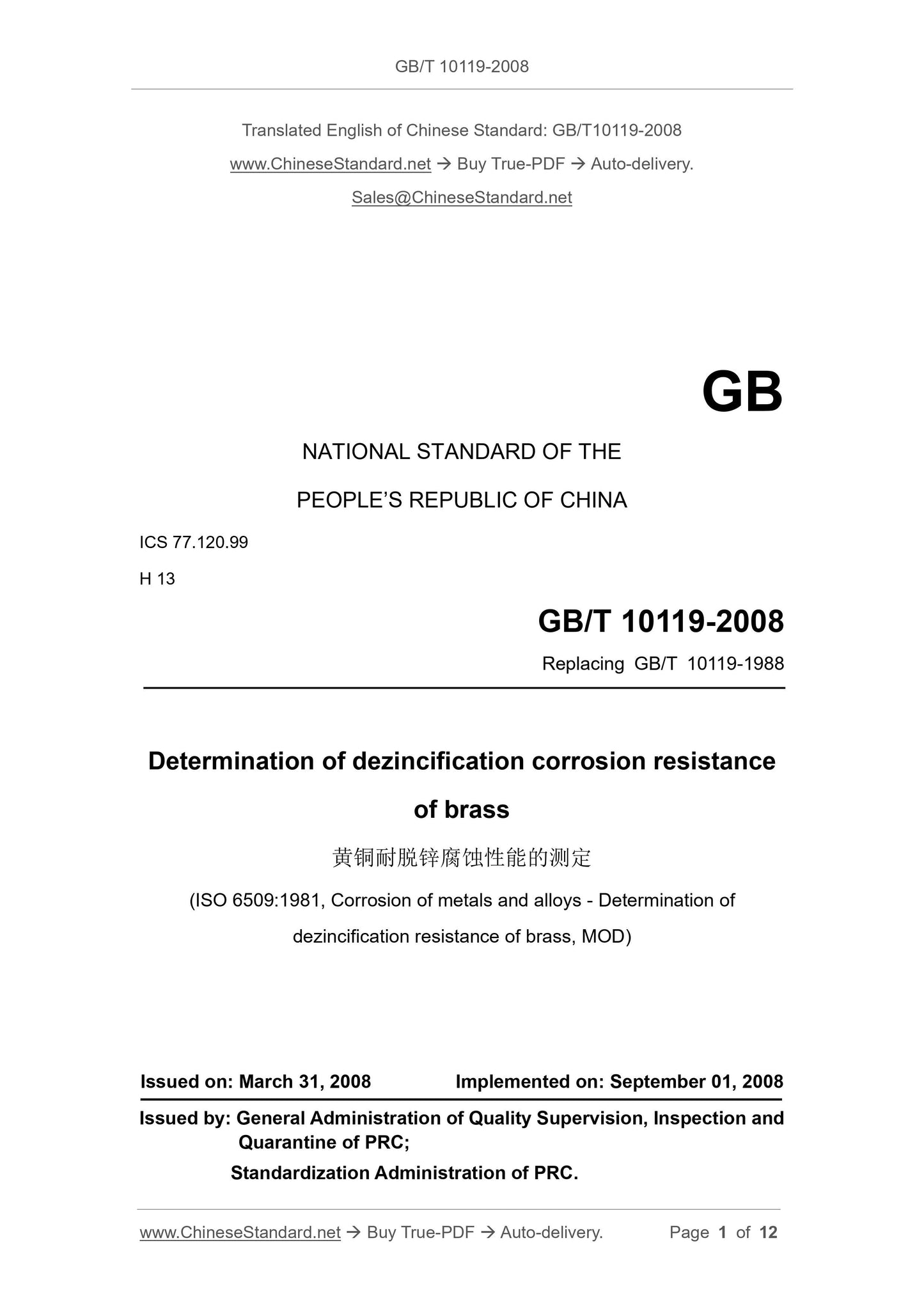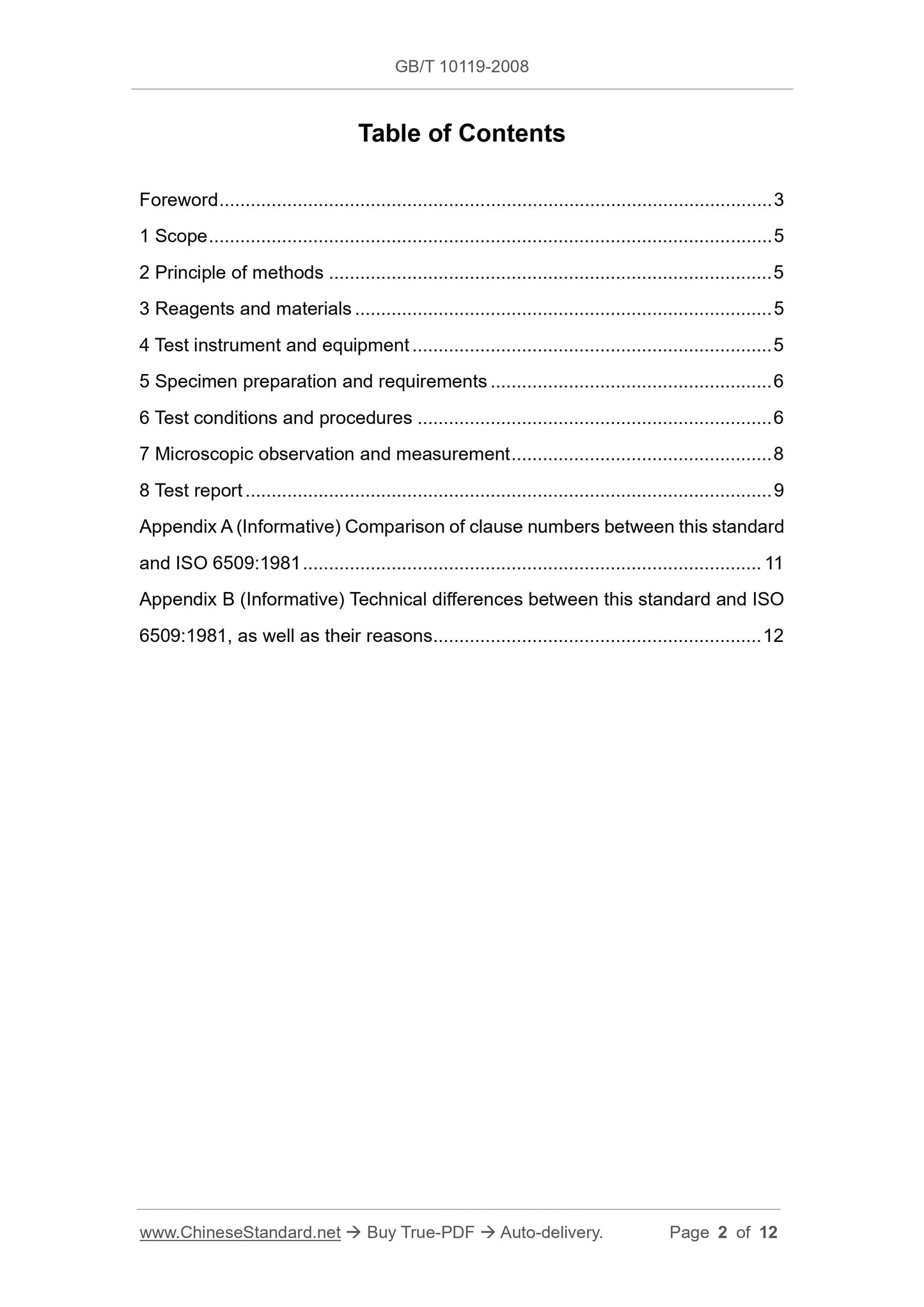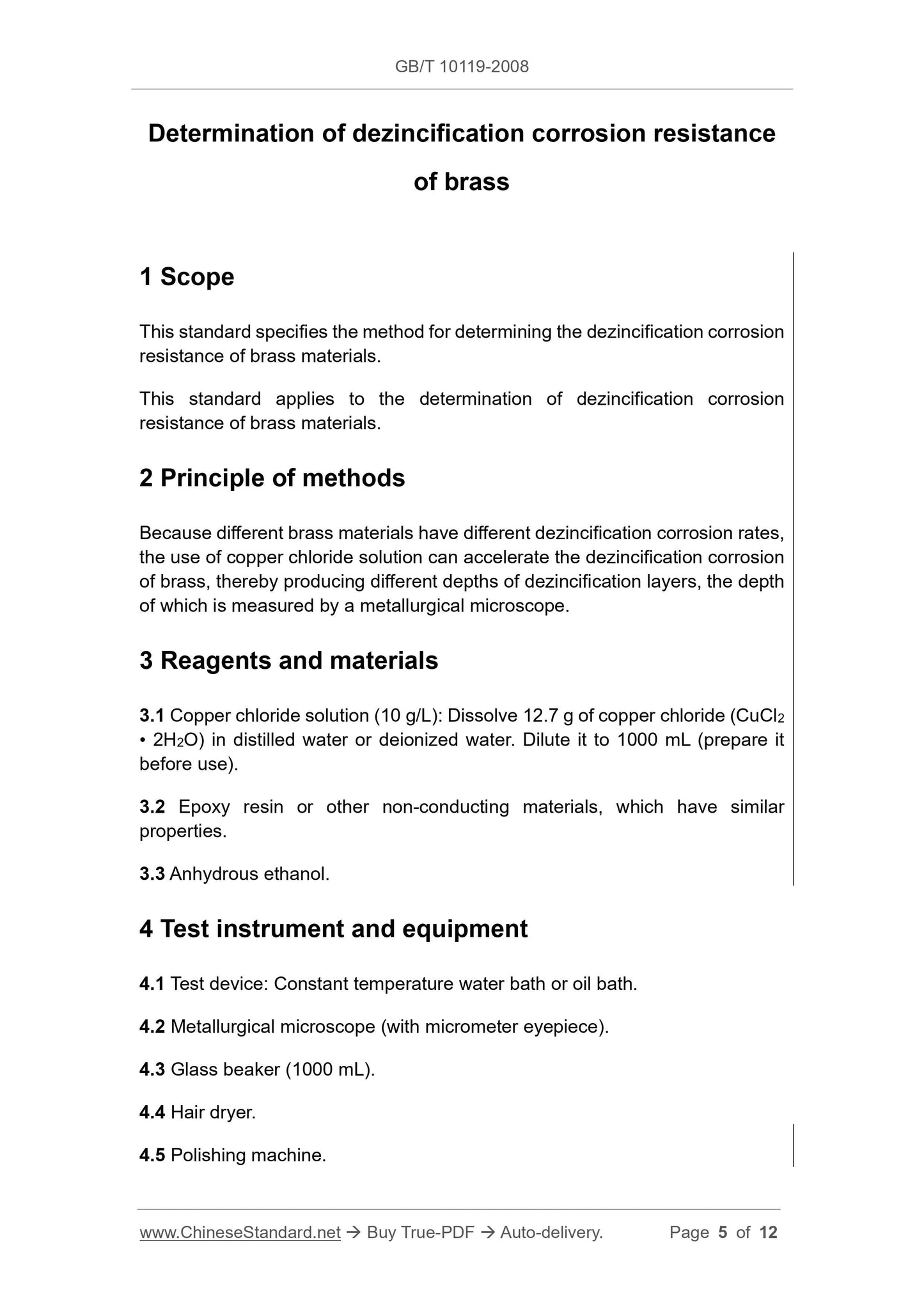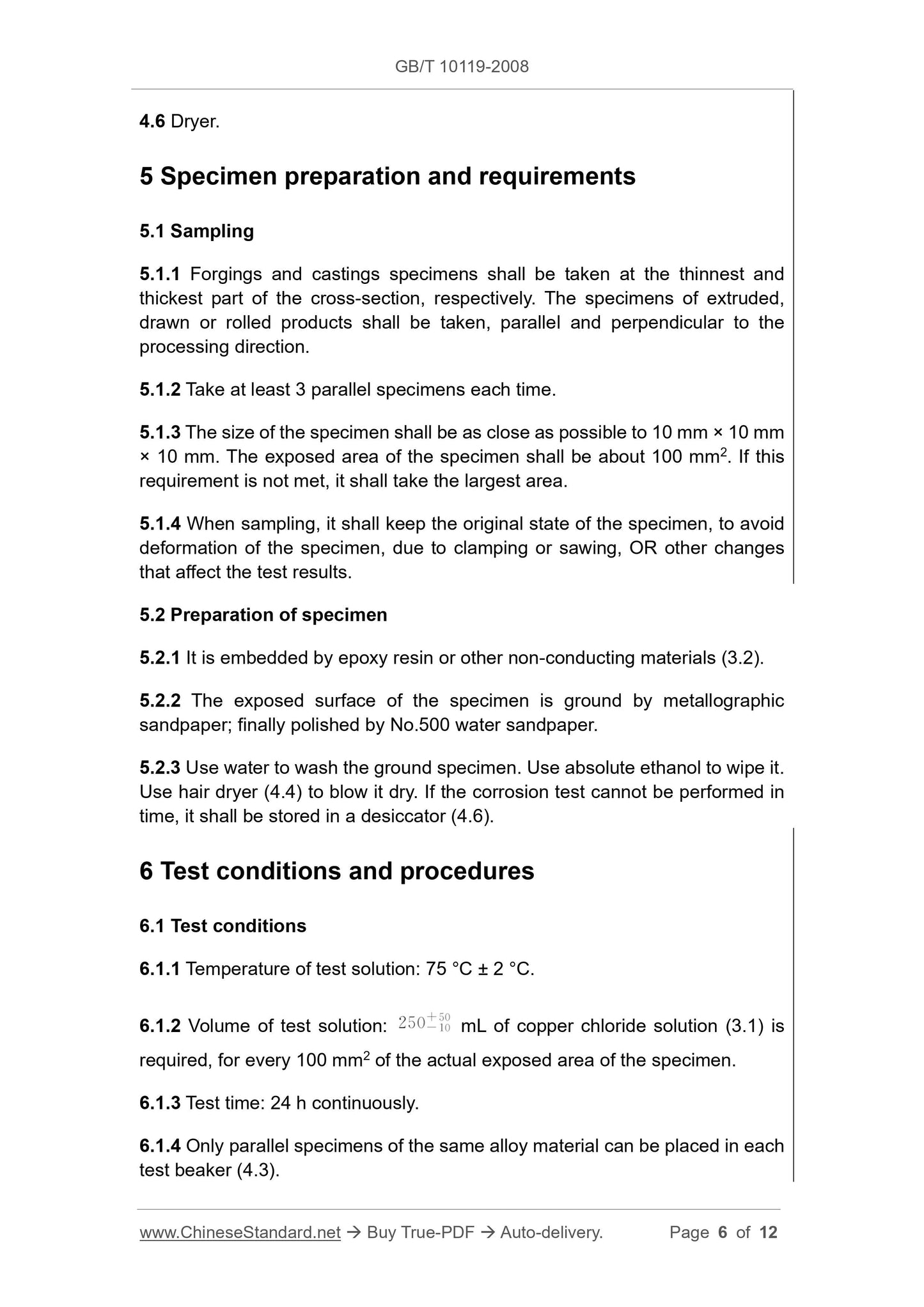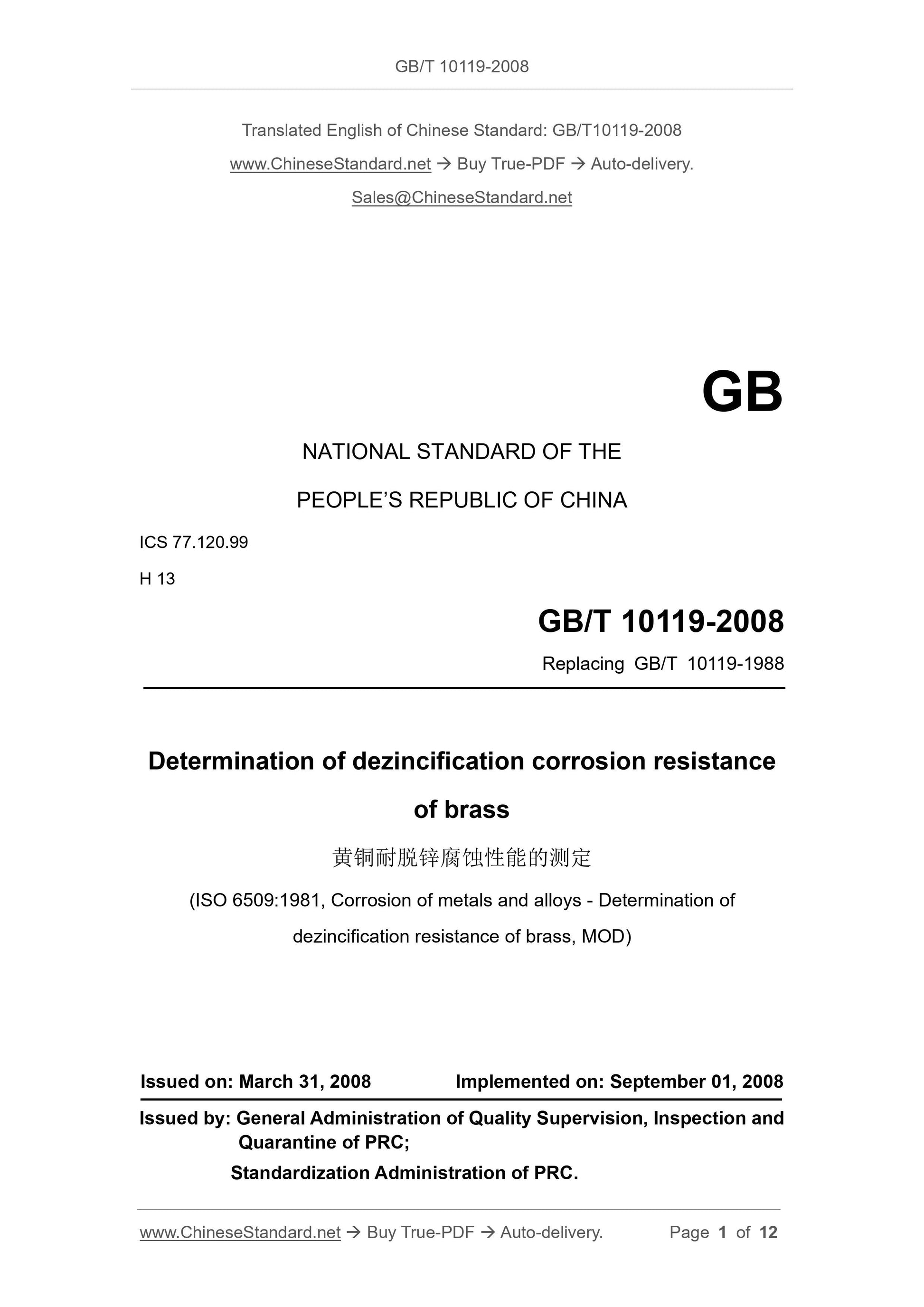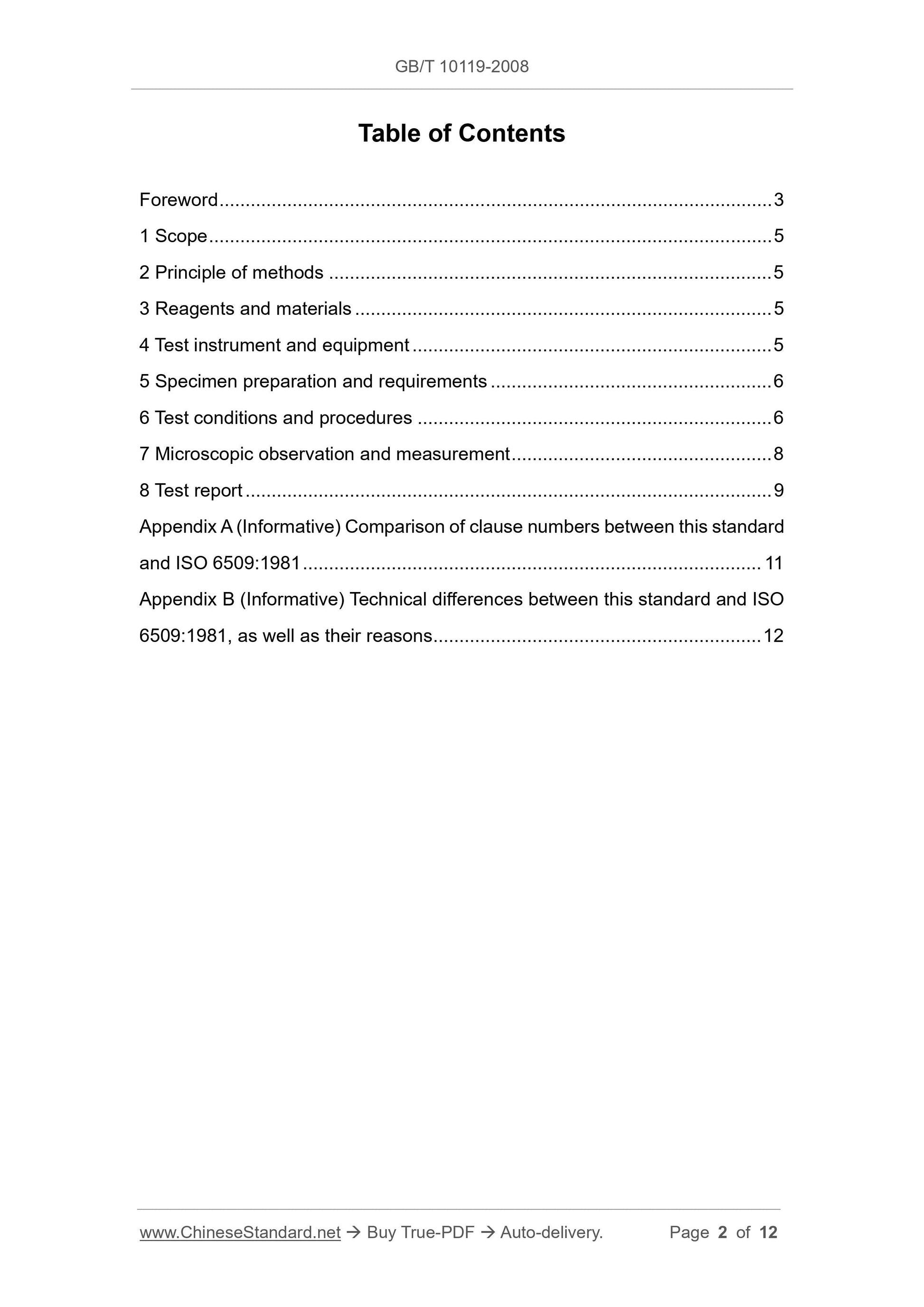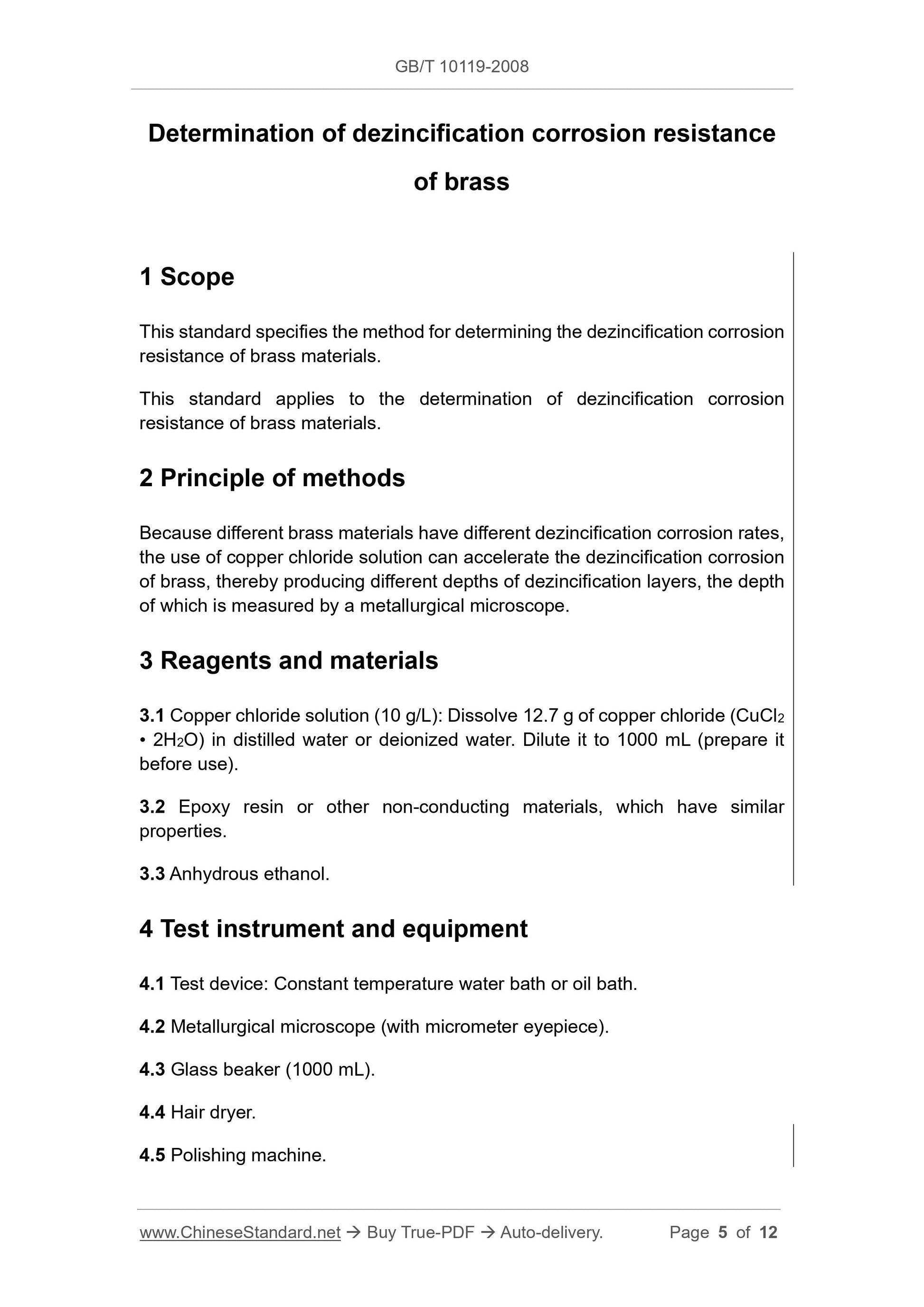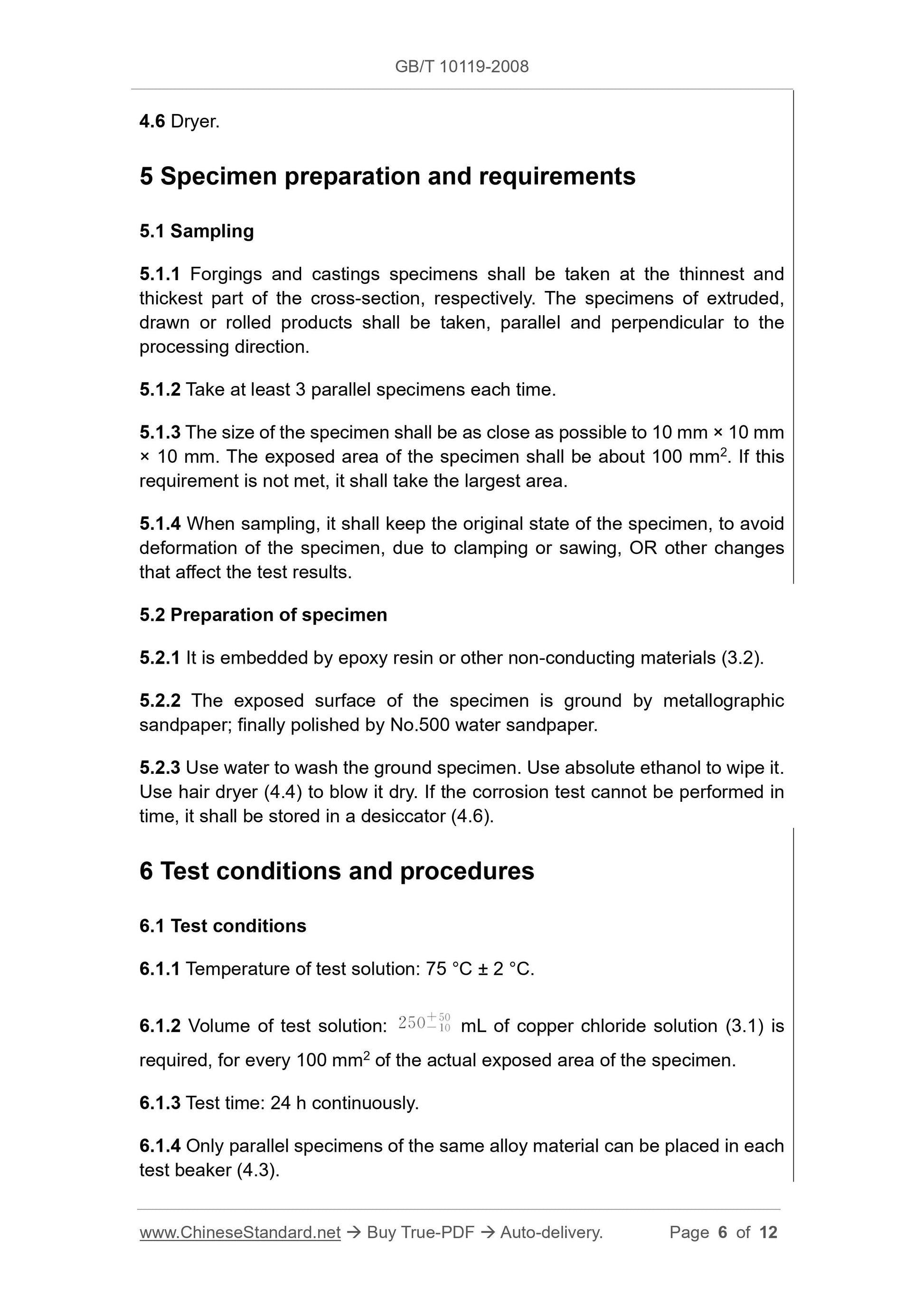1
/
of
4
www.ChineseStandard.us -- Field Test Asia Pte. Ltd.
GB/T 10119-2008 English PDF (GB/T10119-2008)
GB/T 10119-2008 English PDF (GB/T10119-2008)
Regular price
$170.00
Regular price
Sale price
$170.00
Unit price
/
per
Shipping calculated at checkout.
Couldn't load pickup availability
GB/T 10119-2008: Determination of dezincification corrosion resistance of brass
Delivery: 9 seconds. Download (and Email) true-PDF + Invoice.Get Quotation: Click GB/T 10119-2008 (Self-service in 1-minute)
Newer / historical versions: GB/T 10119-2008
Preview True-PDF
Scope
This standard specifies the method for determining the dezincification corrosionresistance of brass materials.
This standard applies to the determination of dezincification corrosion
resistance of brass materials.
Basic Data
| Standard ID | GB/T 10119-2008 (GB/T10119-2008) |
| Description (Translated English) | Determination of dezincification corrosion resistance of brass |
| Sector / Industry | National Standard (Recommended) |
| Classification of Chinese Standard | H13 |
| Classification of International Standard | 77.120.99 |
| Word Count Estimation | 9,957 |
| Date of Issue | 2008-03-31 |
| Date of Implementation | 2008-09-01 |
| Older Standard (superseded by this standard) | GB/T 10119-1988 |
| Adopted Standard | ISO 6509-1981, MOD |
| Regulation (derived from) | National Standard Approval Announcement 2008 No.5 (Total No.118) |
| Issuing agency(ies) | General Administration of Quality Supervision, Inspection and Quarantine of the People's Republic of China, Standardization Administration of the People's Republic of China |
| Summary | This standard specifies the determination of brass resistant to dezincification corrosion. This standard applies to the determination of brass resistant to dezincification corrosion. |
Share
